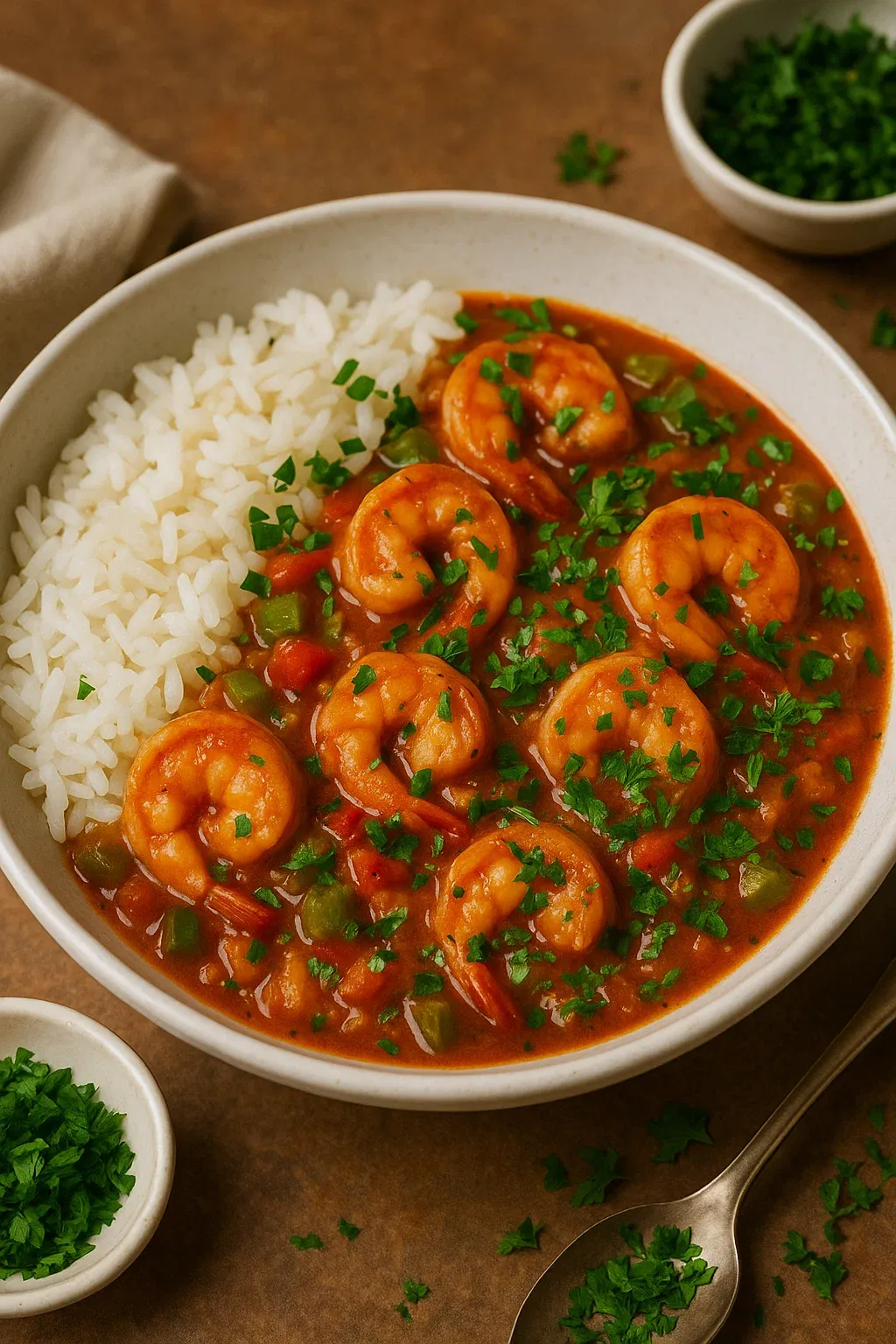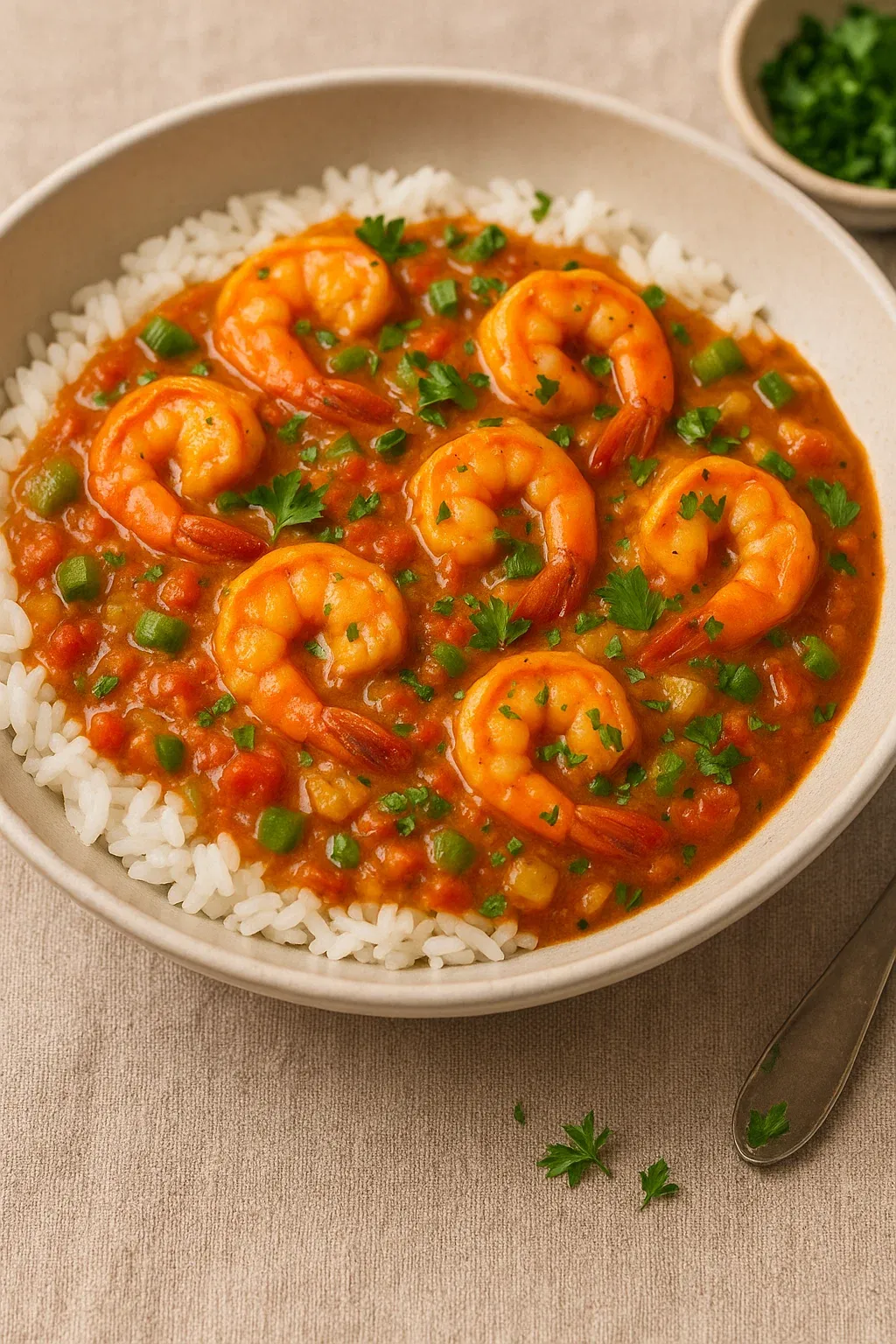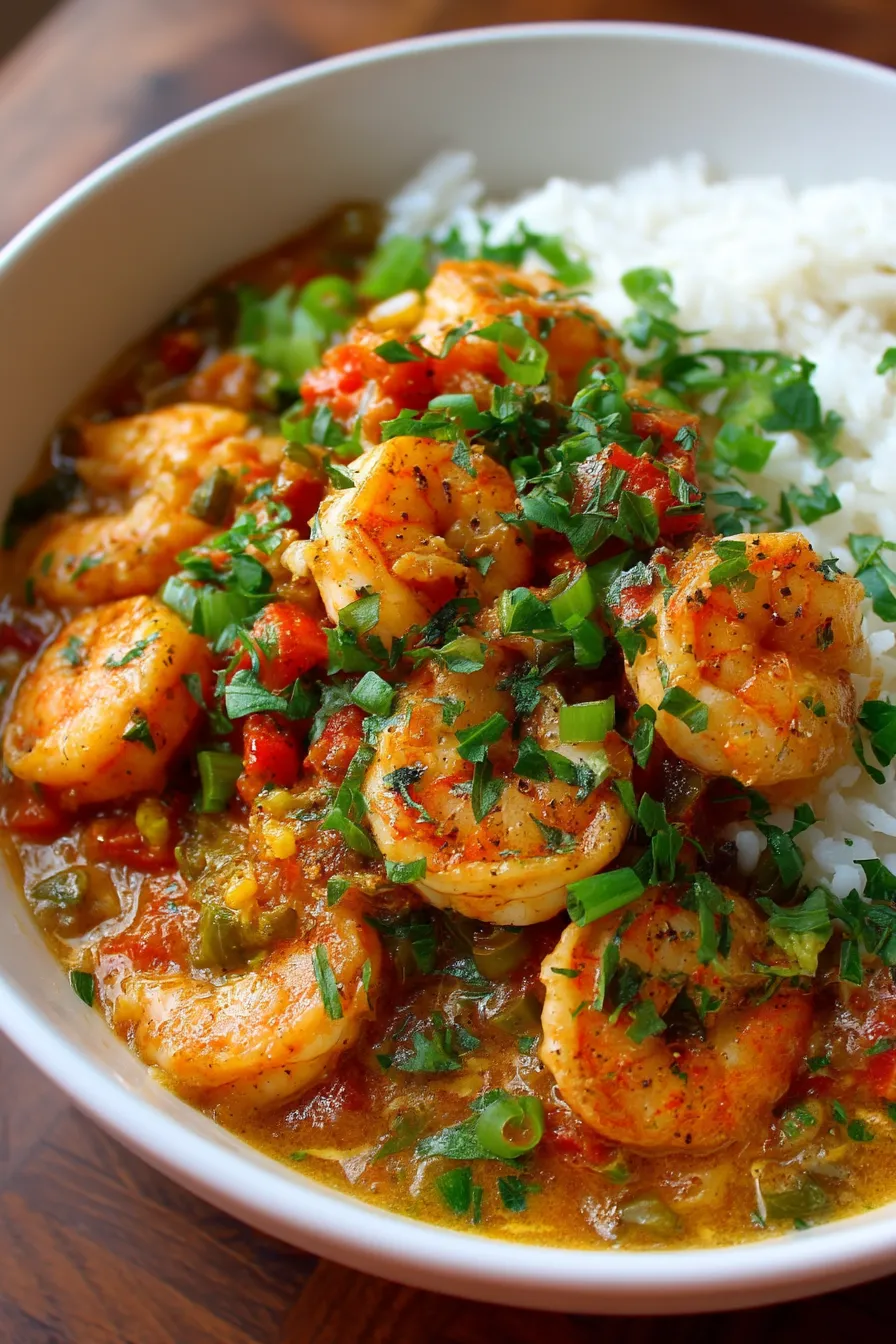 Save
Save
This classic Shrimp Étouffée combines tender shrimp with a rich, flavorful sauce, all served over fluffy white rice. The dish captures the essence of Louisiana cooking with its perfect balance of spices, creating a comforting meal that feels both special and homey.
I first made this étouffée when I was craving New Orleans flavors but couldn't travel. The aroma that filled my kitchen transported me straight to Louisiana, and now it's become my signature dish when friends come over for dinner.
Ingredients
- Medium shrimp peeled and deveined delivers the perfect tender texture and sweet flavor. Look for wild caught Gulf shrimp when possible for the best taste.
- Butter and flour create the essential roux that thickens and flavors the entire dish. Use unsalted butter so you can control the saltiness.
- The holy trinity of onion celery and bell pepper forms the aromatic foundation of all great Cajun cooking. Dice them uniformly for even cooking.
- Garlic adds a pungent depth to the dish. Fresh cloves provide much better flavor than pre minced options.
- Tomatoes bring acidity and balance to the rich sauce. San Marzano variety canned tomatoes work wonderfully if fresh ones aren't in season.
- Shrimp stock intensifies the seafood flavor throughout the dish. Save your shrimp shells to make a quick homemade version.
- Paprika cayenne thyme and black pepper create the signature Cajun seasoning profile. Use fresh spices for the most vibrant flavor.
- Green onions and parsley add brightness and color as finishing touches. The freshness cuts through the richness of the dish.
Step-by-Step Instructions
- Make The Perfect Roux
- Melt butter slowly over medium heat in a heavy bottomed pan until it stops foaming. Sprinkle in flour and stir continuously with a wooden spoon for at least 5 minutes until the mixture turns a warm peanut butter color. This patience building step develops the nutty flavor that makes étouffée special. Never step away during this process as roux can burn quickly.
- Sauté The Trinity
- Add the diced onion celery and bell pepper directly to the hot roux and stir well to coat every piece. Cook for about 5 minutes until the vegetables soften and become translucent but not browned. The vegetables will release moisture that helps prevent the roux from scorching. Add the minced garlic during the final minute to prevent it from burning and turning bitter.
- Build The Flavor Base
- Pour in the shrimp stock gradually while whisking constantly to prevent lumps from forming. Add the tomatoes and all seasonings including paprika cayenne thyme and black pepper. Bring the mixture to a gentle simmer and allow it to cook uncovered for 15 minutes stirring occasionally as the sauce thickens and the flavors meld together into a cohesive whole.
- Cook The Shrimp
- Add the peeled shrimp to the simmering sauce and gently fold them in. Cook just until they turn pink and slightly curl about 3 to 5 minutes depending on their size. Overcooked shrimp become tough and rubbery so watch carefully and remove from heat as soon as they transform from translucent to opaque. Squeeze fresh lemon juice over the top to brighten all the flavors.
- Finish And Garnish
- Take the pan off the heat and let it rest for 2 minutes to allow the flavors to settle. Fold in most of the chopped green onions reserving some for garnish. Sprinkle with fresh parsley just before serving over hot cooked white rice so the herbs stay vibrant green and aromatic. The rice should be fluffy with each grain separate to soak up the delicious sauce.
 Save
Save
I discovered the importance of the roux color when visiting New Orleans years ago. A local chef explained that the darker your roux the more complex the flavor but for étouffée a medium golden roux preserves the delicate shrimp flavor without overpowering it. That moment changed how I approach this dish forever.
The Secret To Perfect Roux
The foundation of any great étouffée is the roux a mixture of fat and flour that thickens and flavors the dish. For authentic Cajun étouffée aim for a peanut butter colored roux rather than the darker chocolate shade used in gumbo. This lighter roux provides thickening power without overwhelming the delicate shrimp flavor. The key is constant stirring with a wooden spoon or flat wooden spatula that can reach the corners of your pan. If you see black specks forming your roux has burned and unfortunately must be discarded and started again.
Make Ahead And Storage Options
Étouffée actually improves with time making it perfect for meal prep. You can prepare the sauce base up to two days ahead keeping it refrigerated in an airtight container. When ready to serve simply reheat gently and add the fresh shrimp during the final few minutes. Leftovers will keep in the refrigerator for up to three days though the shrimp texture is best on the first or second day. For freezing freeze only the sauce base without the shrimp then add fresh seafood when reheating for the best quality results.
Regional Variations
This recipe represents a Creole style étouffée with the inclusion of tomatoes which adds a slight acidity and beautiful color. Traditional Cajun versions often omit tomatoes entirely focusing instead on the richness of the roux and trinity vegetables. In some parts of Louisiana particularly around Lafayette crawfish is the preferred seafood instead of shrimp. Feel free to substitute crawfish tails if available for an equally delicious but different experience. Some rural recipes include a splash of Worcestershire sauce or a bit of filé powder a seasoning made from dried sassafras leaves for additional complexity.
 Save
Save
Recipe FAQs
- → What is the best type of shrimp to use for étouffée?
Medium to large shrimp (16-20 count per pound) work best for étouffée as they hold up well during cooking. Fresh Gulf shrimp are traditional, but good quality frozen shrimp work well too. Always use peeled and deveined shrimp for the best eating experience.
- → Can I make shrimp étouffée ahead of time?
Yes, you can prepare the sauce base up to two days ahead and refrigerate it. When ready to serve, reheat the sauce gently, then add the raw shrimp and cook until just done. This prevents the shrimp from becoming overcooked and tough.
- → What's the difference between étouffée and gumbo?
While both are Cajun/Creole classics, étouffée is thicker and usually features just one protein (traditionally crawfish or shrimp). Gumbo has a thinner consistency, often contains multiple proteins, and includes okra and filé powder. Étouffée is built on a lighter roux, while gumbo typically uses a darker roux.
- → How do I make a proper roux for étouffée?
For étouffée, cook equal parts butter and flour over medium heat, stirring constantly until it reaches a golden-brown color (about 5-6 minutes). The key is constant stirring to prevent burning. The roux should have a nutty aroma and peanut butter-like color when done correctly.
- → What can I serve alongside shrimp étouffée?
Traditional accompaniments include French bread for sopping up the sauce, a simple green salad with vinaigrette, or southern-style green beans. Some also enjoy a side of cornbread or hush puppies. For drinks, consider sweet tea, beer, or a crisp white wine.
- → How spicy is authentic shrimp étouffée?
Traditional shrimp étouffée has a moderate heat level that complements rather than overwhelms the seafood flavor. You can adjust the cayenne pepper to your preference – authentic versions have enough spice to warm the palate but shouldn't be extremely hot.
